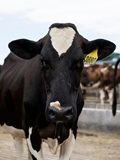National Herd Reproductive Performance Report
Report prepared for Dairy Australia by Dr John Morton BVSc (Hons) PhD MANZCVS (Veterinary Epidemiology), Veterinary Epidemiological Consultant with Jemora Pty Ltd.
The aim of this ongoing project is to monitor reproductive performance trends nationally using summary statistics from analyses of all suitable data in the Australian Dairy Herd Improvement Scheme (ADHIS) and DataGene databases.
This is an inexpensive national monitoring system. However, the results for each year are based on a relatively small and potentially biased subset of all Australian herds. A key point of concern is the marked decline in numbers of mating periods available for analyses, from 872 in 2014 to only 440 in 2019. Furthermore, numbers of herds with actual in-calf rates (ie rates based on early rectal pregnancy test results) also declined progressively from 2014 to 2019 (Table 2). In 2019, actual 6- week or 100-day in-calf rates were available for only 149 mating periods (Table 2), with in-calf rates for the remaining 291 herds being estimated from calving and insemination data. If this monitoring system is to remain useful, it will be necessary to markedly increase the number of herds with complete early pregnancy testing data in the DataGene databases. In the interim, considerable caution is required when inferring changes in the national herd based on these results.
Despite these serious limitations, some conclusions are possible. Across herds that contributed to these analyses collectively, long-term declines in in-calf rates and submission rates plateaued from approximately 2008 and there is some evidence that 100-day in-calf rates in year-round calving herds improved since 2008. These results also provide evidence that 6-week in-calf rates in 2018 and 2019 were generally a little higher than in recent previous years. There was large variation in reproductive performance between herds within years; this variation is large relative to the magnitude of the long term decline, and indicates that high reproductive performance is possible. Both non-genetic and genetic factors contribute to reproductive performance so temporal trends reflect the combined effects of any changes in both non-genetic and genetic factors.
-
National Herd Reproductive Performance ReportPDF, 936 KB

